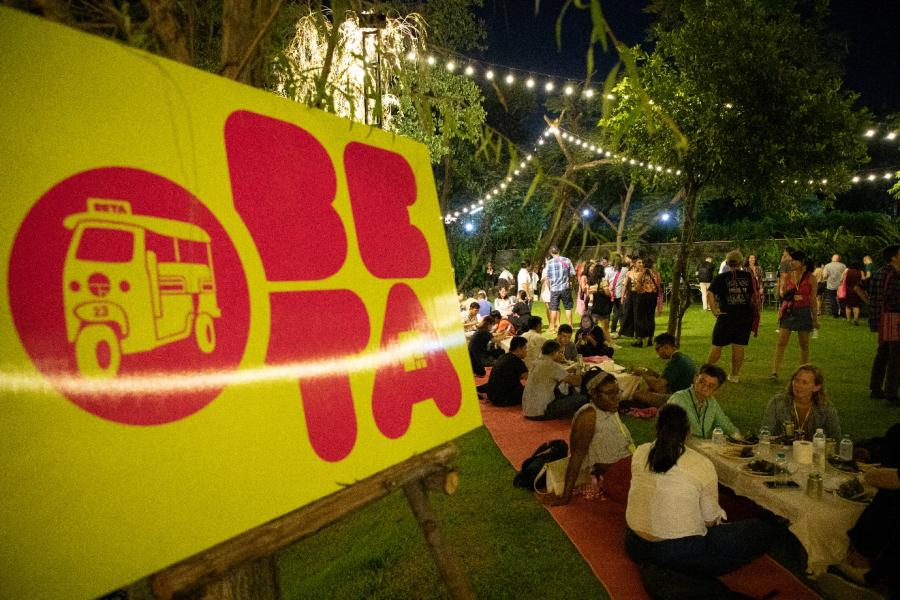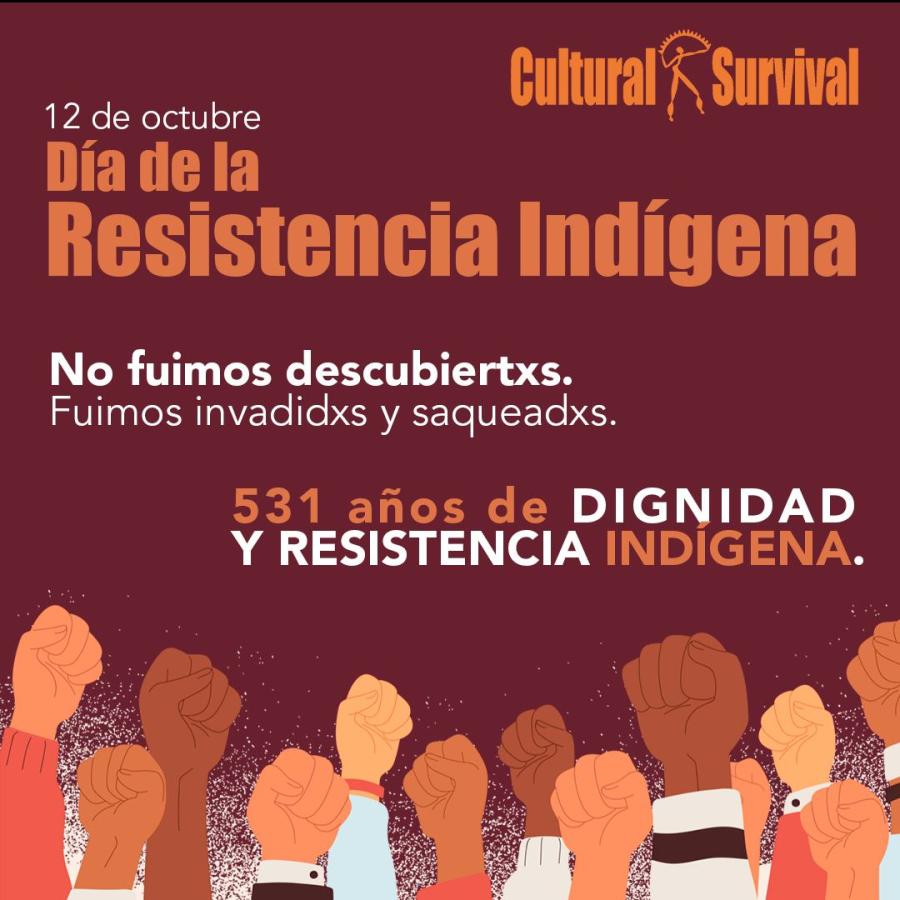With this issues, Cultural Survival Quarterly begins its tenth year. And in 1992, Cultural Survival, Inc, will be twenty. Over these time spans, the magazine and the organization have come into their own, making this a fit time to reflect on where we have come and where we are going.
For a decade, CSQ has been Cultural Survival's face to the world Quarterly have changed US, British, French, Canadian, and German policies toward such countries as Ethiopia, Guatemala, Peru, Sudan, and Uganda. Its coverage has caused the World Bank, the UN High Commissioner for Refuges, and the US Agency for International Development to fundamentally change on-the-ground policies. And the Quarterly has led to stories on every major television network and in all the major newspapers and magazines in the United States. Most importantly, Guatemalan and Brazilian Indians, Tibetans. Burmese, Cambodians, and Rwandans have used the Quarterly in English language press briefings.
Indeed, over the past decade, most people who know about CS do so because of the Quarterly, but more and more the public learns of the organization in other ways. In 1991 alone, some 30 million or so learned of Cultural Survival by purchasing a Rainforest product, while another 20 million read one of the hundreds of articles in other media about the Rainforest marketing program. Other supporters have discovered CS through one of our many projects, which now operate on give continents. Still other allies have been enlisted via our research efforts, whose revealing information has garnered media attention or influenced a government or multilateral lending agency.
However peoples come to know CS, their view is limited, much like the fabled blind wise men, each describing a different part of an elephant. That's why the Quarterly plays such a vital role. Not only does it reflect what CS does, but it also provides the world's most comprehensive source of information about indigenous groups, chronicling the problems that confront 600 million native peoples.
The "Theory" of Cultural Survival Quarterly
CS launched the Quarterly inn 1982 to offer regular, in-depth analyses on topics affecting the survival of indigenous peoples. With that goal in mind, an issue of the Quarterly has often gained its regional focus when a government's programs immediately threatened tribal people, as has been the case with development in Brazil or Peru's Amazon, nation-state conflict in Durma, and resettlement and relocation programs in Guatemala and Ethiopia. At other times. the Quarterly's focus has come from our understanding of how the threats to indigenous peoples encompass whole regions, as is true of nation, state, and tribal conflicts in Africa.
In every case, the idea has been to show that a comprehensive analysis does not arise from understanding only one region. By shifting through more than 300 articles proposed each year, we identify trends that are important globally. This approach has allowed us to identify subjects that weren't receiving proper attention even though they might be mentioned in passing in many single reports.
Simply. CSQ puts the global picture together. In particular, ten chronic themes predominate: * Indigenous peoples must be organized if they are to survive, and outsiders must let them the lead in identifying and implementing strategies for survival. * First-world bans on the sale of pesticides and drugs, as well as the stricter regulation of mining and industry, have shifted many problems from the United States into someone else's backyard, often that of indigenous peoples. * Deforestation is inseparable from the violation of the human and resource rights of indigenous peoples. Our approach has been responsible for a subtle shift of government and NGO policies away from building fences that exclude people (preservation) to working with people to use and preserve resources (conservation). * Environmental degradation and poverty are intimately connected. * It is impossible to address the rights of indigenous peoples outside the larger political context. The United States could never have had a civil rights movement involving only Black people - whites had to play some role, since they were the problem. * There is a continuum between tiny groups living in the Amazon rain forest, the Kalahari desert, and the Arctic, as well as similarities between their problems and those of much larger groups, such as the Kurds in the Middle East or Oromos in Ethiopia. * Major causes of global armed conflicts arise between nations and states. Particularly since World War II, international trade, development, and military and humanitarian assistance have exacerbated these conflicts. * Governments both of the left and right persecute indigenous and nation peoples. In the early 1980s, the governments of Guatemala and Ethiopia asserted state control by using food as a weapon to force indigenous peoples into resettlement program. * Ethnicity and refuges are closely related. In 1982, CSQ demonstrated that most refugees are indigenous peoples who have been persecuted by states that claim them as citizens. The practice of those assisting refugees has never been the same. * Culture and ethnicity are more important than ideology in the identify of indigenous and nation peoples. Dozens of CSQ articles have predicted and explained the rise of nationalism and its overall importance in the creation of a more democratic world.
A Capsule History of CSQ
We knew from the first issue of the Quarterly that the general public, policymakers, activists, and academics would come to know CS mostly through the magazine. And while settling on one publication to fit the needs and concerns of such a diverse audience was impossible in itself, we also wanted to use our limited funds for programs directly with indigenous people.
That meant the Quarterly had to be self-sustaining - just like the efforts was support with indigenous people. As a result, we focused on social scientists ass our initial, more easily recruited, audience. In the early 1980s, they accounted for a third of our subscribers, and while that percentage has declined, the Quarterly has helped shape and make relevant to the world more academic research than any other publication.
Making the Quarterly economically self-sufficient would have been difficult in any event, and we made the task harder by sending CSQ free to any indigenous group or Third World reader who requested it. this meant the magazine began as a labor of love, put out by one or two people doing everything. Unfortunately, that style of work led to an unusual problem. Many people thought the magazine came out of a large organization and they inundated CS with worthy proposals; even now, CS can fund only 5 percent of the proposals it receives.
On the road to a semblance of self-sufficiency, we estimated that our one-size-fits-all magazine could have 10,000 readers by 1990. That number was optimistic for at least two reasons; CS had only 138 contributors in 1979, and it had no publications budget.
We addressed the second hurdle first. Under President Carter, the US government set aside funds for human rights work. Such a grant from the Agency for International Development included money for publications, allowing us to publish the magazine through 1985. By that time, subscribers paid most of the Quarterly's costs and the Ford Foundation had agreed to pay the editor's salary.
To enlarge the audience, we tailored issues of the Quarterly for use as college texts. That was one major reason for focusing each number on a single topic (hunters and gatherers, women, relocation and resettlement, militarization) or region )Africa, Cambodia, Guatemala, India). These subjects readily fit into anthropology classes, yet they challenge basic assumptions of those who had experience with only one culture or part of the world. And because much of out work was "ahead of its time" or the sole source on a topic, back issues often became more popular over time.
Of course, we couldn't control how some people would use the Quarterly Not a few anthropologists bragged they could get several lectures from each issue. When asked if the Quarterly was assigned for reading for their classes, they'd say no: they'd have to work harder to prepare their lectures - and answer the questions students would inevitably raise after reading CSQ.
In the end, we surpassed our ambitious goal, Cultural Survival now has some 20,000 members.
Where Next?
Cultural Survival's time has come. For a decade, we have identified and defined the issues of the day - rising nationalism, sustainable resource management, indigenous wisdom. And in the next few years, we expect a tremendous boost in interest in the organization as a result of our marketing program, the June 1992 UN Conference on the Environment and Development in Brazil, the 500th anniversary of the arrival of Columbus in the Americas, and the declaration of 1993 as the UN year of indigenous peoples. In addition, "Millennium," a public-television series on cultural diversity that will air in mid-1992m could reach 60 million people around the world.
Still, even this potential visibility can't adequately address the reality of indigenous peoples or the survival strategies they and their supporters jointly pursue. For this reason, our publications will be critical throughout the 1990s. We intend to take the rising concern for indigenous peoples and convert it to a deeper understanding of and involvement with the issues.
To accomplish that goal, CS publications are becoming more diversified. In 1992, we will launch the CS Bulletin, aimed at changing the way our supporters act. The bulletin will be short, published frequently, stress action, and briefly report on CS work and how others can take part. It will provide members with urgent news from around the world, and, perhaps most important, the bulletin will provide a timely forum for indigenous people speaking for themselves on topics of their choice.
As for CSQ, it will still educate readers through its in-depth analyses, comprehensive reporting, and reliability. The Quarterly will continue to be especially valuable to an audience that wants to understand the world around it - including that influential part of our constituency that creates and implements policies, programs, and research.
By publishing several publications, aimed at different audiences, we expect to broaden our membership to 100,000 or more by the end of 1993. By keeping the Quarterly as our flagship, we will accomplish this while maintaining the credibility and respect the organization has today.
Article copyright Cultural Survival, Inc.



